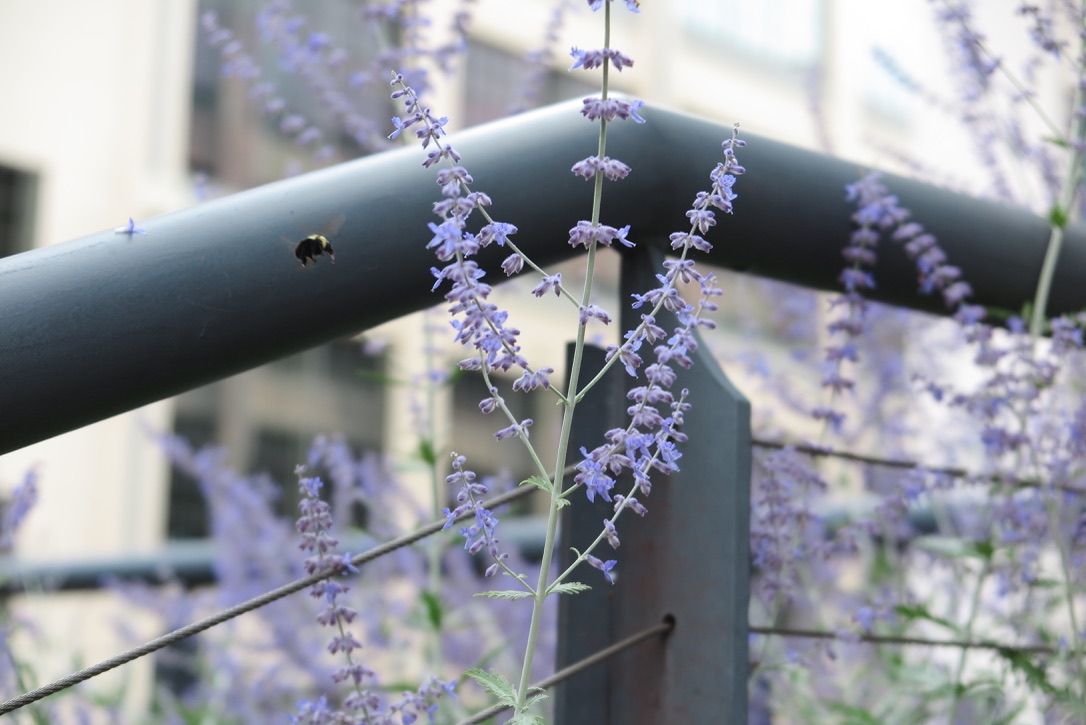When you think of urban landscape, wildlife isn’t necessarily at the top of your mind. But that doesn’t mean it’s not there, lurking under the rocks and among the flowers, trees, and buildings of our inclusive concrete jungle.
While the Innovation Quarter has redeveloped and rejuvenated old factories, the natural ecosystem of birds, mammals, and insects preserves a sense of vibrancy in the heart of downtown Winston-Salem. We have adapted to each other as entrepreneurs and community members, and we make sure that nature and greenspaces in the Innovation Quarter complement this development—as it’s something that larger cities may not experience.
We went for a walk through the Innovation Quarter with Frank Fowler, a biologist and the vice president of McNeely Pest Control. He showed us where wildlife lives, what they eat and how we can help keep their habitats safe and healthy.

Biotech Place Patio
What we found on the patio:
- Broadhead and five-lined skinks—two distinct types of lizards. Fowler says these creatures are here to dine on ants and other insects traveling up and down the maple trees because they are attracted to the sap.
- Toads, which dine on insects under the iQ lights at night.


Bailey Park
What we found around the park:
- A wide variety of birds (hummingbirds, turkey vultures and black vultures, robins, English starlings, mockingbirds)
- Pollinators (honeybees, bumblebees, butterflies)


Fowler says you can sometimes find raccoon paw-prints on trash cans, “but the Innovation Quarter team has done a great job of both keeping the brush from getting overgrown while still supporting life but incorporating sanitation to deter pests.”


Architecture
“Architecture is conducive to animal life. They use the edges on a building like a sidewalk. In fact, in the past, Peregrine falcons, hawks, and ravens have nested on top of [Bowman Gray Center for Medical Education], and other birds like to perch on the smokestacks because they’re safe from predators there,” Fowler shares.
But buildings aren’t always bird-proof, so Fowler and his team have made some modifications by adding bird exclusionary stealth netting underneath the overpass between Bailey Power Plant and Bailey South.
McNeely also uses camouflaged bait stations through the Innovation Quarter to compliment the green aesthetic of Bailey Park and other green spaces.


Long Branch Trail/Research Pkwy
Now, here’s where things get really wild! Here’s what we discovered beyond the center of the Innovation Quarter:
- Coyotes. But don’t panic, Fowler says. They use railroad tracks as a natural corridor and have a 7–8-mile home range. Fowler notes, “Their presence is the beauty of co-existing with wildlife—which is also why it’s important to always keep pets on a leash though in case wildlife is encountered while out walking.”
- Groundhogs
- Hawks
- Red and gray fox
- Rabbits
- Deer


Dragonflies and damselflies. Fowler says their presence signifies a healthy water source close by because they depend on water to complete their life cycle. They are also beneficial because they eat insects.
Why your help is important
Did you know that one of the first sewer and water systems in North America was in Old Salem in 1779? Today, our storm drains flow directly to the river systems. It is very important that we are careful of what enters these drains to help protect our natural recourses
Fowler says that picking up dog waste is his top tip for keeping away unwanted pests. In fact, your dog can actually attract rats if their waste is not picked up and disposed of properly in the provided dog waste containers. He also stressed the importance of finding a balance between aesthetic landscaping and overgrown planting and bedding areas.





